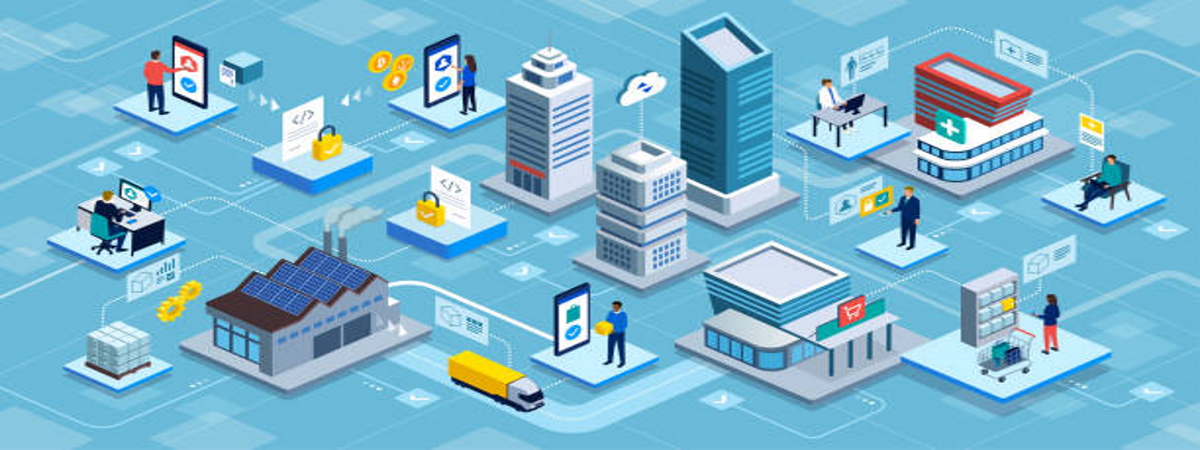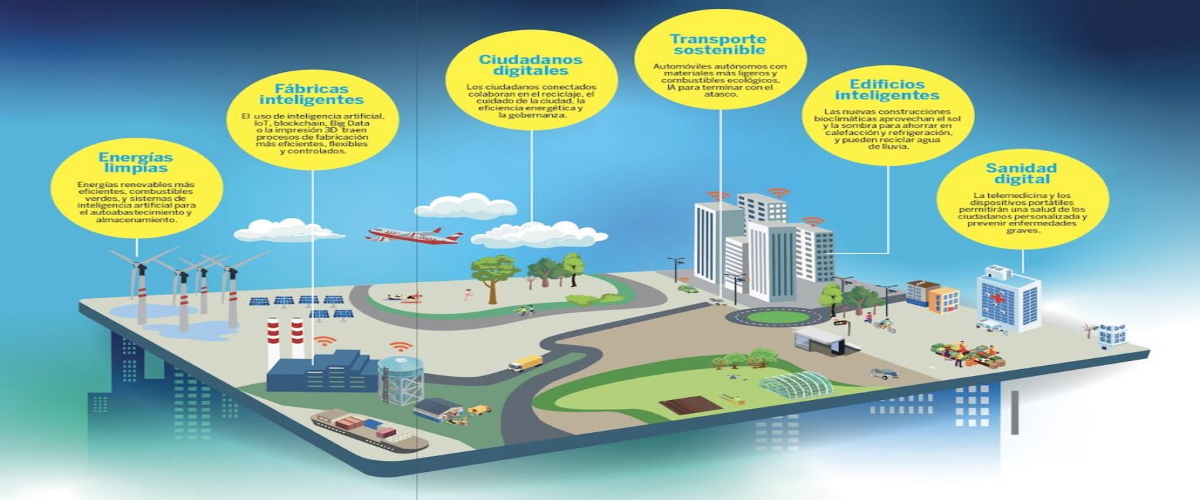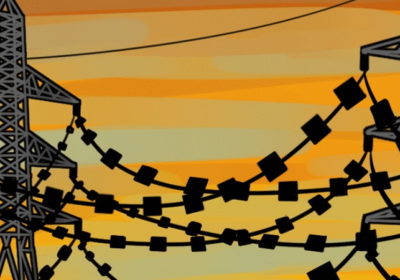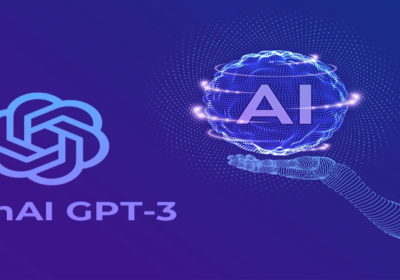
As more and more cities seek to improve the infrastructure and services that enable the management of cities, we realize that using applications that converge and combine with each other is what makes it easier for us to consider huge technological leaps in the way of implementing solutions for the transformation of cities into Smart Cities.
Within the Industry 4.0 paradigm, blockchain and artificial intelligence are two of the emerging fields that are gaining a lot of popularity in the world of technology applied to the Smart Cities ecosystem. Both offer innovative solutions to a number of problems and challenges, and combining them can lead to even greater possibilities and benefits.
Decentralization and security in blockchain.
First, blockchain technology is based on a decentralized network of nodes that are used to store and verify data. Its main feature is that this network is secure and tamper-resistant, which makes it an ideal platform for data management and transaction recording, especially considering that, in the management of a city, there are hundreds, if not thousands, of potential systems working with citizen data. Artificial intelligence, on the other hand, refers to the ability of a machine to mimic human thought and make autonomous decisions based on data and algorithms. Perhaps this last definition falls more or less short, but let’s leave it at that for the moment to understand why both technologies can offer us, in the medium term, solutions to optimize many of the services of Smart Cities.
Blockchain technology can be used in Smart Cities in several ways. Roughly speaking, and as an example, to securely and transparently manage and record the use of resources such as energy and water, or to manage traffic and thus optimize public transportation, which can improve mobility in the city, etc. Wherever data needs to be recorded securely and efficiently, blockchain is a technological candidate for this.
Artificial intelligence, meanwhile, can be used in city services to analyze large amounts of data and extract valuable information from it, which can be useful in a wide range of applications, such as climate monitoring and weather forecasting, detecting faults in critical systems such as the power grid, or improving public safety.
Combining properties and potentials of blockchain with AI
Thus, one way in which blockchain technology and artificial intelligence can be combined is in the development of smart contracts. Smart contracts are programs running on blockchain networks that can carry out transactions automatically once certain conditions envisioned by the parties creating the contract are met. Thus, these contracts can use artificial intelligence to analyze the data on which the smart contract is based, and make decisions before launching the processes registered in them, which makes them more flexible and efficient, and with a greater capacity for transactions of information, properties, or changes within the services of the city to occur with all the guarantees that there is no failure, omission of data or lack of information between the parties, what was agreed by these and what is to be executed between the two.
Then, if in the previous example artificial intelligence is the support to a process that occurs mainly in a blockchain network of an urban service, the opposite is also more than possible, since another area where blockchain technology and artificial intelligence can be combined is in data analysis where the blockchain network can be used to collect and store large amounts of information in a secure and verifiable way, while artificial intelligence can be used to analyze that data and extract information needed to manage some urban service, with the blockchain protocols then supporting the main AI-based service management process. In this case, for example, this can be useful in applications ranging from health (smart healthcare) to the monitoring of the municipality’s own financing, the management of orders and contracts with the city’s service providers, the analysis of traffic data or the monitoring and analysis of demographic changes within the Smart City itself.
Due to the robustness and security of blockchain technology, it can also be used to protect the privacy of all these data used by artificial intelligence algorithms, since the very way a blockchain works already ensures the encryption and secure storage of information, which prevents unauthorized access by third parties. This can be particularly useful in the case of sensitive personal data, collected by municipalities or city service companies, which must be protected by multiple means against improper access by third parties and cyber-attacks.

Difficulties in the process of developing and combining AI with blockchain
Being incipient technologies, which are being developed at a dizzying pace and continue to grow exponentially, their implementation is therefore not without its difficulties. One of the biggest when developing blockchain applications for Smart Cities is the need to have a sufficiently large and diverse network of nodes to ensure the security and stability of the blockchain throughout the city’s technological infrastructure, whether for a specific service or within the city’s IT systems as a whole. Since blockchain technology is based on a decentralized network of nodes that are used to validate and store data that you want to record in it, the larger and more diverse this network is, the more secure and tamper-resistant the blockchain will be.
Another difficulty is the lack of regulation and standards around this technology, taking into account that it is the substrate of the new economy based on cryptocurrencies. Although blockchain as a technological mechanism is gaining popularity, there are still many uncertainties and challenges when it comes to regulating it and using it safely and efficiently due to the number of complex situations, failures, hacks, bankruptcies of companies in the sector, etc., derived from the crypto ecosystem that we have seen developing in recent months. This can hinder the development of blockchain applications for Smart Cities and make it more difficult to gain the support and trust of authorities and the population.
There is also a technical challenge in developing blockchain applications to support smart services, and that is that blockchain technology is complex and requires a high level of technical expertise to develop and maintain applications based on it. This can make it difficult for many companies and organizations to access this technology, which can limit its adoption in many cities.
AI also has its own hurdles
On the other hand, the idea of applying artificial intelligence to different “smart” developments in a city is not without its difficulties either, because if AI relies on data to be useful, it is the lack of high-quality data in sufficient volume that limits its potential in any aspect. Artificial intelligence is based on machine learning, which means it requires large amounts of data packets to train and improve. Without sufficient and high-quality data, it is difficult to develop AI applications that are accurate and efficient. Regarding its regulation, it is the same as with blockchain technology, there is still a long process and a long way to go before we have clear and optimal regulations on the use and development of these applications in the management of infrastructures and services that affect our daily routines in our cities and towns.
In any case, the process continues. Both technologies continue to develop and converge in some aspects. Little by little, solutions will be provided on their own to minimize the still incipient aspects of their large-scale implementation, and we will learn how to integrate them into many of the infrastructures of our Smart Cities in order to rely on them when managing the entire transformation of the city.



